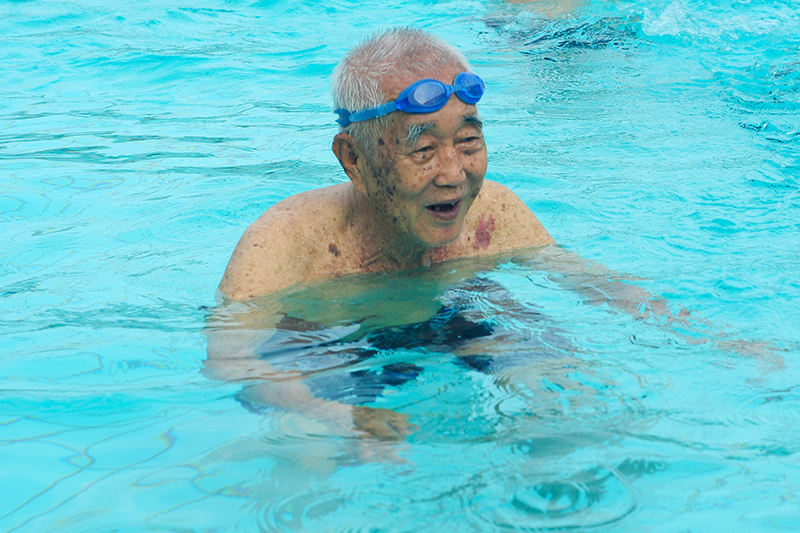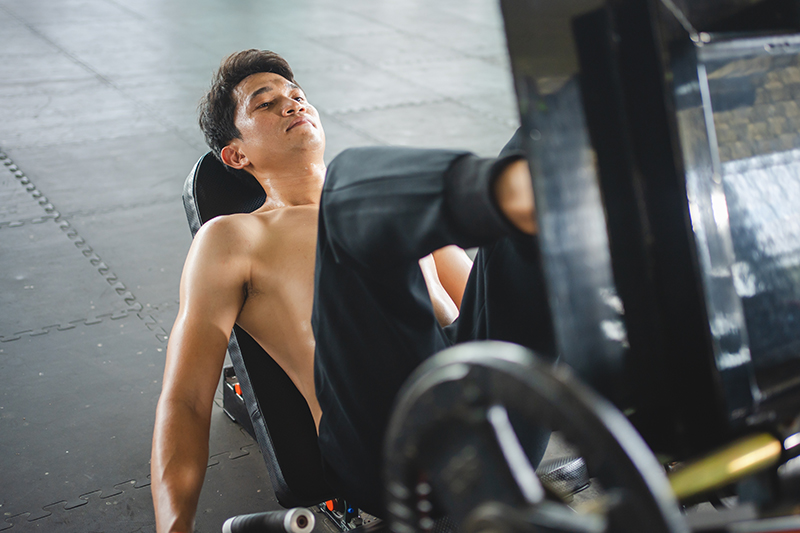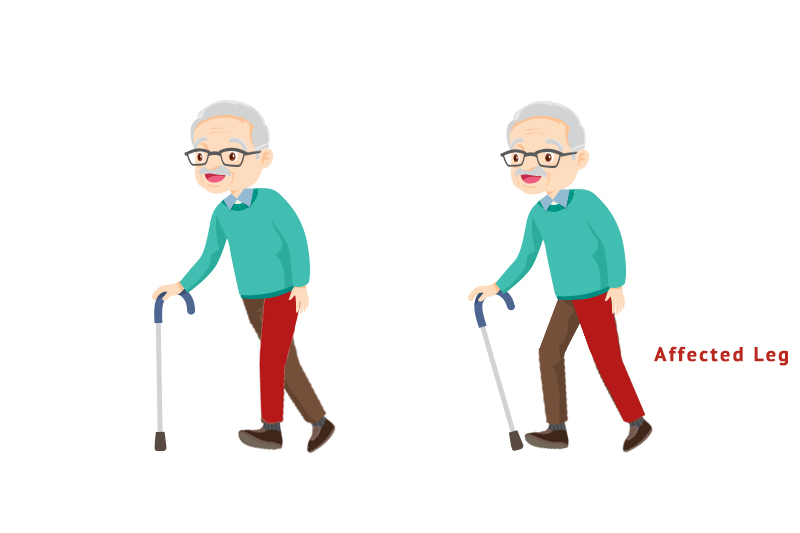Osteoarthritis of the knee
OA knees is a progressive disease that wears out the joint cartilage. Pain results from the contact of the bone surfaces in the absence or reduction of the joint cartilage. The pain is then evident when pressure is created in the joint surfaces. This pressure can occur in simple daily activities such as walking, stair walking, and squatting.

OA knee is the most common form of arthritis in Hong Kong. It affects up to 7% of men and 13% of women aged 50 years or above1.According to the population statistical information in Hong Kong in 2020, 3161210 people were 50 years of age or older. It means that about 110000 men and 205000 women aged 50 years or above are suffering from OA knee.
II. How do I know if I have OA knee?
If you have at least 3 of the following symptoms, you are likely to suffer from mild to moderate OA knee2:
- Crepitus (grating sound created with movement)
- Morning stiffness <30 mins
- Bony Enlargement
- No palpable warmth
- Age>50
- Bony tenderness
III. Physiotherapy for OA knee?
Though OA knee is a progressive disease, it is a condition that often slowly develops over years, so when diagnosed with OA knee, there are still many things that you can do to control the deterioration The following measures can be taken to help make a difference
1. Weight Management

Healthy weight, Healthy Knees
If you are overweight, there will be increased stress on the joints in your body. During simple daily activities such as walking and going up and down stairs, your knees carry up to 3 times your body weight. So, losing even a small amount of weight would greatly reduce the strain on your knees. With a reduction by at least 5% of your initial body weight, studies have shown an improvement in both function and pain!
2. Exercise
Joints need movement to stay healthy, and this is especially important if you have osteoarthritis in the knee. By following the prescribed exercise routine given by your physiotherapist, exercise is a great way in improving your function and reducing the pain in your knee joint. Remember it is important to balance the amount of exercise and rest as too much or too little exercise can increase your pain and stiffness. In addition to prescribing exercises, your physiotherapist will help you find this balance.

Balance is crucial when it comes to exercise. Don’t get discouraged if you have a flare up after exercising! Finding the right exercise and balance takes time.
We all know that staying focused on your exercise routine is tough at times, so it is recommended to space out some visits with your physiotherapists as booster sessions (e.g. weekly, monthly, quarterly) to keep you motivated in working towards a healthier joint.
How can a physiotherapist help you?
If you suffer from OA knees, simple daily activities such as walking, stair climbing or hiking could aggravate the condition and cause symptoms to arise. However, there is strong scientific evidence supporting exercise in improving pain and function for mild to moderate OA knees. Currently, multiple international guidelines strongly recommend exercise as a conservative treatment for mild to moderate OA knees. Here at HKSH, our physiotherapists are trained in designing and implementing scientifically proven and effective exercise programmes according to your physical condition and co-morbidity.


For patients who suffer from more severe pain, our physiotherapist-led aquatic exercise is another option available which allows for strengthening with less loading on your knees.

In addition to exercise, our specially trained physiotherapists in pain management may also educate you in adaptive pain coping skills which can also help you better manage your pain.
3. Ergonomic Advice
Several epidemiologic studies have investigated and found a relationship between knee OA and functional activities in occupations, such as kneeling, squatting, stair walking, and lifting or carrying heavy loads. Each one of these activities increases the risk of OA knee by more than 2.5 folds when performed daily3-5.

Therefore, it is important to manage the amount of time spent performing these tasks, especially if it is something you perform regularly.
Some alternatives you may consider is the use of escalators/elevators as opposed to stair walking, use of small trolleys when carrying goods, sitting on low stool with when work needs to be performed in squatting positions.

When performing high loading activities repetitively, find alternatives to manage the loading
Sometimes it is impossible to avoid stairs, and on bad days, a useful technique to go up and down stairs is to use the good leg to go up first then follow with the bad leg to the same step. Going down is with the bad leg first followed by the good leg to the same step.
4. Use of Walking aid

If necessary, our physiotherapist will help prescribe a walking aid that is most appropriate for you. A walking aid is a great low-cost tool for reducing pain in knee arthritis and also improves function. Some options include walking frames, crutches, and different forms of canes6.
A general guideline when adjusting the height of the cane for first time use, should be about the crease of the wrist when the arm is relaxed by the side. Remember when using a cane, to place it on the same side as your good leg.
5. Brace
When a doctor has determined you have OA knee, you can inquire in more detail which joint is affected. In addition to understanding your condition more, it would also allow you to make a better decision if you decide on purchasing a knee brace. A correct knee brace can lead to decreased pain and improved functional ability.
When affected by medial or lateral tibial femoral joint OA, an unloading style brace that opens up the affected side would be beneficial (as shown below). For patellar femoral joint OA, a brace that provides dynamic support to the patella would be beneficial.
At HKSH we offer a variety of knee braces through our Prosthetist & Orthotist department. For more information, please feel free to contact them through 2835 8648 or visit their website (http://dpmr.hksh.com/zh-hk/dpmr-our-services/prosthetic-and-orthotic-services?mobi_redirect=true) for detail.

For patient with severe OA knee which is characterized with knee joint deformity, severe swelling and pain, consultation to a knee surgeon may help you decide whether it is necessary for a joint replacement. (http://osmc.hksh.com/en?mobi_redirect=true)











